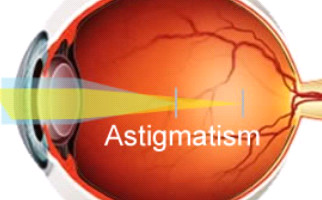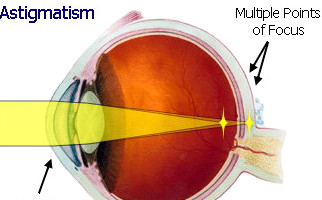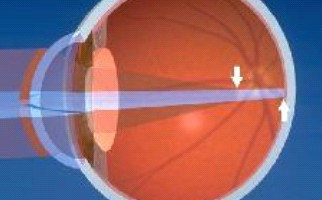Astigmatism
What exactly is astigmatism?
Astigmatism is a refractive error of the eye in which corneal layer is elliptical (not spherical) with asymmetric curvatures. Incoming light rays (reflections) are not focused on just one point of the retinal layer, as happens in normal emmetropic eyes, but they merge into one line in the front or at the back (e.g. 2 vertical between reflections) of the retina. Astigmatism usually coexists with myopia or hyperopia.
Astigmatism symptoms:
Blurred vision, objects distortion, rapid fatigue in everyday activities (reading, driving, computer use) are the main symptoms of astigmatism.
Astigmatism causes:
The 2 corneal axes are so called ‘corneal meridians’. The substantially difference in curvature and convexity of the already mentioned meridians is the main cause for the occurrence of astigmatism. The greater the meridians’ deviation is, the more the diopters of astigmatic. Astigmatism can be regular (when the 2 axes are perpendicular each other) or irregular (when the 2 axes are not perpendicular).
Astigmatism treatment and correction:
- Eye spectacles with cylindrical lenses (or sphere-cylindrical for myopic or hyperopic astigmatism)
- Contact lenses (usually soft or semi-hard)
- Laser refractive procedure (excimer laser)
- Surgical procedure for toric IOL implantation (toric intraocular lens) and replacement of eye’s natural, crystalline lens (much of the time in older people, in combination with cataract lens extraction (phacoemulsification)















